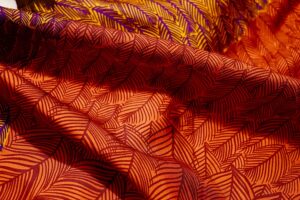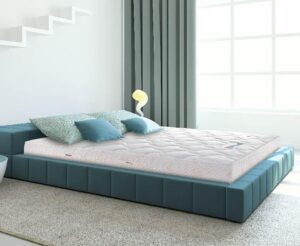 I’m starting to get my clothing and house more under control for my chemical allergies. We have gotten rid of all body care and cleaning products that directly contain my allergens. Fabrics have been tougher, but I have the materials I need to cover up or change out the polyester seams in my cotton shirts (I just need the time), my pants aren’t bothering me so much now that I’m in 100% cotton pants most of the time, I’m skipping the bra most days, my socks only have one polyester seam (which I need to sew a cover over top of), and my 100% cotton underwear is on the way. I use a cotton, linen, and wool blanket to sit on my leather couch, and we have cotton sheets. I have a cotton ventile jacket for spring, summer, and fall use, and a shearling coat for winter is on its way to me. I’m now starting to move onto the second-level allergen exposures: Things that don’t stay in constant contact with my skin but whose infrequent contact with my skin is likely, or which could release unpleasant airborne particles and chemicals.
I’m starting to get my clothing and house more under control for my chemical allergies. We have gotten rid of all body care and cleaning products that directly contain my allergens. Fabrics have been tougher, but I have the materials I need to cover up or change out the polyester seams in my cotton shirts (I just need the time), my pants aren’t bothering me so much now that I’m in 100% cotton pants most of the time, I’m skipping the bra most days, my socks only have one polyester seam (which I need to sew a cover over top of), and my 100% cotton underwear is on the way. I use a cotton, linen, and wool blanket to sit on my leather couch, and we have cotton sheets. I have a cotton ventile jacket for spring, summer, and fall use, and a shearling coat for winter is on its way to me. I’m now starting to move onto the second-level allergen exposures: Things that don’t stay in constant contact with my skin but whose infrequent contact with my skin is likely, or which could release unpleasant airborne particles and chemicals.
I’m starting with the most common secondary exposure routes. I already switched out my sweat-collecting and hair-holding-back headband for a cotton and linen blend bandana, with a rolled hem sewn with cotton thread. I use a cotton towel between me and the leather seats in the van. We’ve switched out plastic (partially nylon) kitchen utensils for metal and wooden ones, and gotten rid of our plastic cups. The next one on the list has been a big one: The bed.
 I’m not ready to change out the mattress yet. While I’m positive that switching to a cotton and wool mattress with no flame-retardant chemicals will lighten my chemical exposure load in what can only be a positive way, mattresses are pricey, and ones made of natural materials even more so. Our current mattress is still surviving well, so I’m looking for ways to make the current sleeping arrangement better with the mattress we already have.
I’m not ready to change out the mattress yet. While I’m positive that switching to a cotton and wool mattress with no flame-retardant chemicals will lighten my chemical exposure load in what can only be a positive way, mattresses are pricey, and ones made of natural materials even more so. Our current mattress is still surviving well, so I’m looking for ways to make the current sleeping arrangement better with the mattress we already have.
Starting from the mattress, we currently have a laminated (thus plastic, probably polyurethane) fabric dust mite cover, a polyester-based mattress pad to help make the unbreathable dust mite cover less sweaty, a bottom sheet made of cotton, a top sheet made of cotton, and a rayon with polyester fill blanket. Yes, rayon is made from wood, but it’s heavily chemically-treated to make it soft and not wood-like. I’m ignoring the tiny bit of polyester ribbon trim on the edge of the top sheet and pillow case – we can always flip that end to the bottom and I tend to stay in the center of my pillow. If all else fails, I can trim it so it sticks out very little. Fully tight-woven cotton dust mite covers are available (try here or here), but companies often don’t make them for the 18-inch-thick mattresses of today. We will wait to purchase one until we get a new mattress, since our mattress is approaching ten years old and we don’t know how thick a new one would be. The rest I think we can improve.
 Firstly, that polyester mattress pad. Polyester not only doesn’t breathe, but it contains polyethylene glycol, a cross-reactor for one of my allergens, propylene glycol. While it’s the sheet directly in contact with my skin, sweating can cause migration of chemicals onto the sheet, and eventually to my skin. That’s not my idea of fun. I’ve been looking into mattress pads, and I think I’ve found some great choices. Quilted cotton-covered, wool-filled mattress pads not only breathe, but they also help regulate temperature and the wool is naturally bacteria- and odour-resistant (which is good, because you can’t wash these things much). Wool also has the added benefit of helping to wick moisture away from your skin, which reduces sweatiness. Other mattress pads are made by setting wool fibres into a polyester or cotton backing (the polyester-backed ones are often washable). Medical fleeces provide the same benefit but use whole sheepskins and usually aren’t large enough for a whole bed. If all else fails, even a cotton or wool blanket between the mattress and sheet should help.
Firstly, that polyester mattress pad. Polyester not only doesn’t breathe, but it contains polyethylene glycol, a cross-reactor for one of my allergens, propylene glycol. While it’s the sheet directly in contact with my skin, sweating can cause migration of chemicals onto the sheet, and eventually to my skin. That’s not my idea of fun. I’ve been looking into mattress pads, and I think I’ve found some great choices. Quilted cotton-covered, wool-filled mattress pads not only breathe, but they also help regulate temperature and the wool is naturally bacteria- and odour-resistant (which is good, because you can’t wash these things much). Wool also has the added benefit of helping to wick moisture away from your skin, which reduces sweatiness. Other mattress pads are made by setting wool fibres into a polyester or cotton backing (the polyester-backed ones are often washable). Medical fleeces provide the same benefit but use whole sheepskins and usually aren’t large enough for a whole bed. If all else fails, even a cotton or wool blanket between the mattress and sheet should help.
Next, the blanket. Who hasn’t been pushed onto a bed in fun (or romance) at least once? Now how well does that romance fare If you’re worried about whether you’ll react later to the fabrics and fibres used in the blanket? You can see my desire for a 100% safe blanket. The easiest answer is a cotton duvet cover. Cotton can be washed easily as needed, and the duvet cover embraces the bed in a polyester thread-free surface, perfect for those times when you just want to fall down on top of your bed. Duvet covers can be found almost anywhere, even from 100% cotton, but I found these amazing ones from Maiwa Handprints. They’re made from organic cotton, hand-stamped in complex patterns of colour, and dyed with natural dyes.
 It would be an improvement to stop there, but I’m still left with the not-very-breathable polyester fill blanket, rayon, and possibly migrating chemicals. The next step is to change the blanket itself. Cotton blankets usually run in the range of US$60 to $300, and are also easily located in your nearest big box store or specialty store. The advantage of cotton over wool here is that cotton won’t continue to shrink the way wool will. We like to have a bit more weight to our blanket – something we can use comfortably year-round. Again, I found wool was the best option. Feather- or down-filled duvets are easier to find, but don’t breathe as well and the feathers are treated with a number of chemicals. I’ve also seen silk-filled duvets, but wool-filled duvets are slightly easier to find and seem to have a more comfortable bulk, as well as being slightly more flame-resistant (if that matters to you). Here are some of the options I found for comforters and mattress covers. Many companies carry both kinds of product:
It would be an improvement to stop there, but I’m still left with the not-very-breathable polyester fill blanket, rayon, and possibly migrating chemicals. The next step is to change the blanket itself. Cotton blankets usually run in the range of US$60 to $300, and are also easily located in your nearest big box store or specialty store. The advantage of cotton over wool here is that cotton won’t continue to shrink the way wool will. We like to have a bit more weight to our blanket – something we can use comfortably year-round. Again, I found wool was the best option. Feather- or down-filled duvets are easier to find, but don’t breathe as well and the feathers are treated with a number of chemicals. I’ve also seen silk-filled duvets, but wool-filled duvets are slightly easier to find and seem to have a more comfortable bulk, as well as being slightly more flame-resistant (if that matters to you). Here are some of the options I found for comforters and mattress covers. Many companies carry both kinds of product:
- goodnight NATURALS
- Shepherd’s Dream
- my Organic sleep
- The Clean Bedroom
- Nuevo Norte Alpacas in Ontario, Canada, make alpaca-filled duvets from their own alpaca wool
- Heirloom Linens
- Sheepskin Stuff
- Real Wool Shop carries the same brand as Sheepskin Stuff and another.
- Topsy Farms
- The Mulberry Silk Company
- SmartSilk
We decided to go with a mattress pad and comforter from Custom Woolen Mills. They’re Canadian, they process their own wool and sew their own bedding, and they claim to only use a mild cleaner on their wool. They sew with polyester thread, but a few polyester seams that aren’t even in direct contact with my body, ever, should be okay. They even sell 100% cotton and wool sleeping bags, in two widths.
UPDATE (December 20, 2016): I received my comforter and mattress pad from Custom Woolen Mills today. Wanting to be sure I could be as safe as possible, I called them to find out what they use to wash the wool. They said they do a wash in Bio-Soft EC-639 (made by a company called Stepan), followed by two plain water rinses. The Bio-Soft contains POE-8, which is polyethylene glycol monododecyl ether, and lauryl alcohol ethoxylate. Propylene and polyethylene glycol are cross-reactors and propylene glycol is one of my allergens, so this is something of which I need to be aware. They suggested I run a vinegar rinse of the comforter and mattress pad on the wool cycle of my washer, on cool. The wool cycle should turn my front-loading washer drum no more than 1/4 turn before turning back the other way, which will reduce felting of the wool. It will then spin to wring and I can hang the items to dry. It seems Custom Woolen Mills offers a vinegar rinse of the wool for sensitive people, so I’ve asked for that on the sleeping bag I also ordered. The casing will still need at least a moderate cleaning, as the fabric is used direct from the manufacturer, but it should be better.
 I’ve forgotten the pillow itself, which suffers from the same secondary-exposure issues as the blanket and mattress pad, being stuffed with polyester. I’ve picked up a 5 lb bag of kapok fibre from Organic Cotton Plus for about $50 US. I don’t think I’ll use it all for one pillow. Kapok fibre is fluffy and naturally chemical-free because it’s harvested from seed pods from naturally-growing ceiba trees. They might remove a few seeds, but otherwise they just bundle up the fibre and ship it off. I’ll either sew it into a cotton casing myself or I’ll un-stuff one of my existing cotton-cased pillows, wash the casing, fill it with the kapok fibre, and sew it back up. I’m hoping the kapok fluff won’t felt together and become harder over time the way wool fill would (it shouldn’t), and it’s not said to contain fine fibres that can irritate the lungs the way cotton fill can (though they still recommend wearing a dust mask when handling). That still doesn’t fix the issue of the polyurethane-laminated dust mite cover on my pillow, but I will get a cotton dust mite cover when I can, and maybe I’ll wait to remake the pillow until then.
I’ve forgotten the pillow itself, which suffers from the same secondary-exposure issues as the blanket and mattress pad, being stuffed with polyester. I’ve picked up a 5 lb bag of kapok fibre from Organic Cotton Plus for about $50 US. I don’t think I’ll use it all for one pillow. Kapok fibre is fluffy and naturally chemical-free because it’s harvested from seed pods from naturally-growing ceiba trees. They might remove a few seeds, but otherwise they just bundle up the fibre and ship it off. I’ll either sew it into a cotton casing myself or I’ll un-stuff one of my existing cotton-cased pillows, wash the casing, fill it with the kapok fibre, and sew it back up. I’m hoping the kapok fluff won’t felt together and become harder over time the way wool fill would (it shouldn’t), and it’s not said to contain fine fibres that can irritate the lungs the way cotton fill can (though they still recommend wearing a dust mask when handling). That still doesn’t fix the issue of the polyurethane-laminated dust mite cover on my pillow, but I will get a cotton dust mite cover when I can, and maybe I’ll wait to remake the pillow until then.
The process of removing allergens from the home (and immediate environment) is an ongoing one. There will always be something else that *could* be changed. Luckily I’ve had the chance to change a few things at once this time around. What have you done to make your bed safer with chemical allergies? Comment below.
